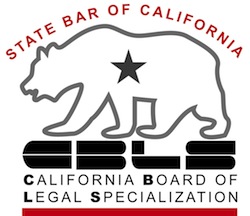 The waiting and uncertainty is over. The judges have decided.
The waiting and uncertainty is over. The judges have decided.
Chapter 13 debtors can void underwater junior liens even if they aren’t eligible for a bankruptcy discharge in the Chapter 13 case.
So says the 9th Circuit Court of Appeals in a case called Blendheim, decided October 1.
And so, a myriad of Chapter 20 debtors and title insurers round the circuit heave a sigh of relief.
“Chapter 20” is legal slang for a Chapter 13 case that follows a Chapter 7 case so closely that the debtors don’t get a discharge in the new case.
Bankruptcy courts in many districts have been voiding worthless liens in cases where the homeowner isn’t eligible for a discharge generally since the Great Recession began.
Yet some judges and some scholars questioned whether the law allowed elimination of a lien at the end of a Chapter 13 when the cases concludes without a discharge.
I have tried to imagine the chaos that would be created if the appeals court had ruled that all these lien strips in Chapter 20 cases were themselves void.
The prospect wasn’t pretty.
What’s Chapter 20
A no discharge Chapter 13 came into being with bankruptcy “reform” in 2005. BAPCPA introduced a rule that a Chapter 13 discharge was only available if the 13 was filed at least four years after an earlier Chapter 7.
More on when you can file bankruptcy again
Often, the debtors still had unfinished business with creditors at the end of a Chapter 7. Often it was mortgage arrears or non dischargeable taxes, debts that could be addressed and made right in Chapter 13.
Only Chapter 13 offers debtors the chance to strip off a voluntary mortgage lien, and that, only if there is no equity at all that is available for the mortgage lien to attach to.
So Chapter 20’s have abounded.
But we didn’t know whether the change in the availability of a Chapter 13 discharge made in 2005 limited the ability to strip off a lien and voided it at the end of the case.
The court held that the Blendheim’s efforts to save their home through Chapter 13 were done in good faith and a discharge was not required to void a lien.
Hurray.
More on liens and houses in bankruptcy
Is it too late to strip a junior mortgage?
Getting rid of tax liens in Chapter 13





